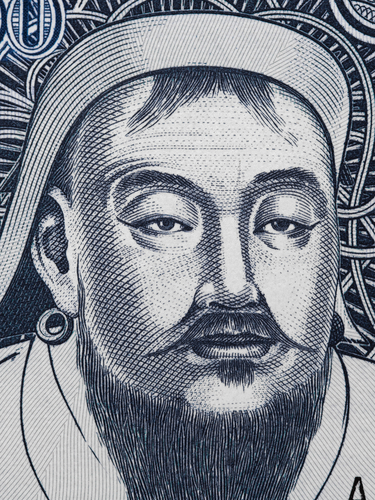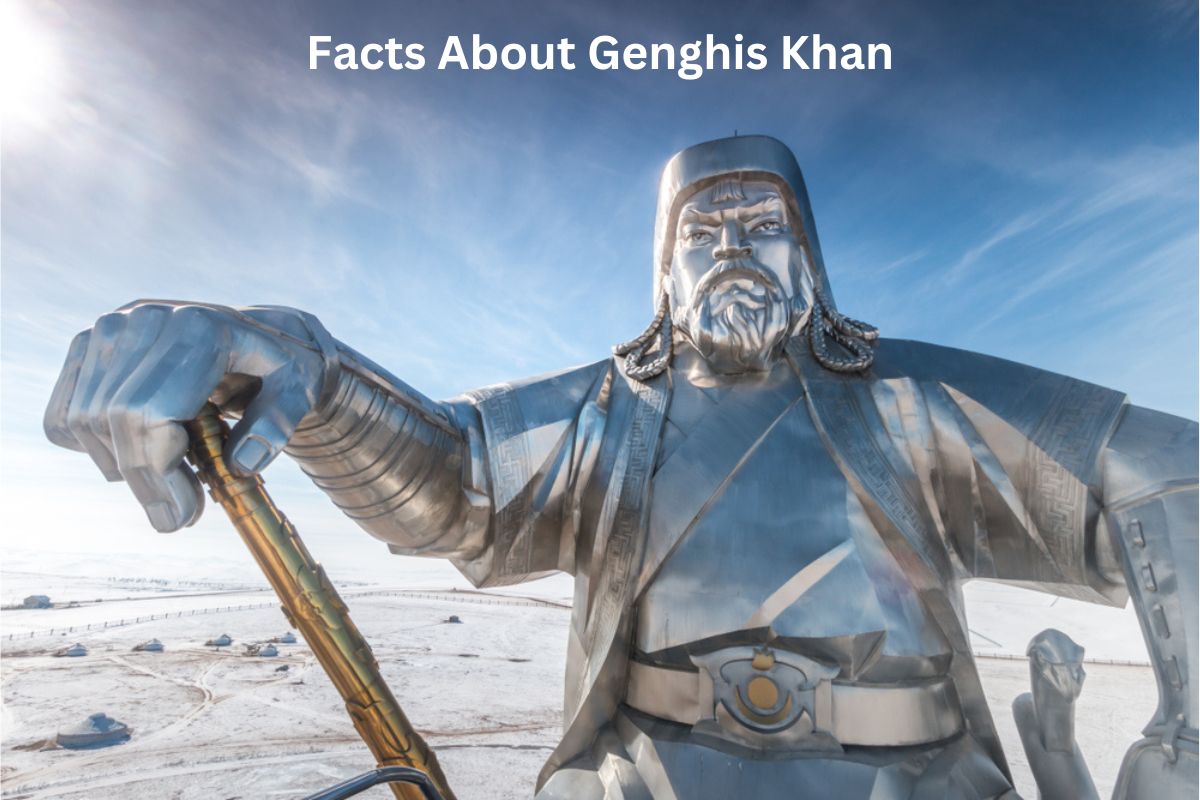Genghis Khan, born as Temüjin in 1162 on the Mongolian steppes, emerged from a challenging upbringing to become one of history’s most influential figures.
Through his visionary leadership, innovative military tactics, and far-reaching conquests, he forged the vast Mongol Empire, which stretched across continents and left an enduring impact on cultures, governance, and trade.
Beyond his reputation as a conqueror, Genghis Khan’s legacy also encompasses religious tolerance, legal reforms, and administrative innovations that shaped the course of history.
Genghis Khan Facts
1. Born as Temüjin in 1162, near Onon River, Mongolia
Genghis Khan, originally named Temüjin, was born into the Borjigin clan in the harsh Mongolian steppes.
His early life was marked by adversity, including the murder of his father and the subsequent struggle for survival.
Also Read: Genghis Khan Timeline
This tumultuous upbringing shaped his determination and leadership skills, which would prove crucial in his later endeavors.

2. United Mongol tribes, forming the Mongol Empire
Temüjin’s rise to power was characterized by his ability to unite disparate Mongol tribes under a single banner. Through diplomacy, strategic marriages, and military conquests, he gradually gained the loyalty of various clans.
Also Read: Accomplishments of Genghis Khan
In 1206, a kurultai (a gathering of Mongol chieftains) proclaimed him Genghis Khan, meaning “universal ruler.” This marked the official establishment of the Mongol Empire and the beginning of his ambitious campaigns.
3. Used innovative cavalry tactics for conquest
Genghis Khan revolutionized warfare with his innovative cavalry tactics. He organized his forces into units known as “tumens,” each consisting of 10,000 skilled horsemen. These cavalry units were highly mobile and could swiftly encircle and attack enemies.
Genghis Khan emphasized discipline, coordination, and surprise in his military strategies. His use of psychological warfare, such as creating the appearance of a larger force through campfires, often caused panic among his opponents.
4. Allowed religious freedom and promoted tolerance
Despite his reputation as a fearsome conqueror, Genghis Khan exhibited a surprising degree of religious tolerance. He recognized the diversity of beliefs within his empire and understood that promoting religious freedom could contribute to stability.
Genghis Khan refrained from imposing his own religious beliefs on his subjects, allowing them to practice their faiths without fear of persecution.
This approach helped maintain a relatively peaceful and harmonious coexistence among different religious communities under his rule.
5. Implemented fair legal reforms across the empire
Recognizing the need for a well-organized and just legal system to govern his vast empire, Genghis Khan undertook legal reforms. He established a code of laws known as the Yassa, which covered a wide range of issues from property rights to criminal justice.
The Yassa aimed to ensure fair treatment for all citizens and provide a sense of order and predictability in the empire. These legal reforms helped foster social stability and unity among the diverse populations under Mongol rule.
6. Introduced efficient administrative systems, like the Yam
Genghis Khan’s empire covered an immense geographical area, from Eastern Europe to Asia, which posed significant challenges for governance and communication. To address this, he introduced the Yam system, a network of relay stations and postal routes.
This system enabled quick communication and efficient transportation of goods and information across vast distances. The Yam system facilitated the flow of orders, reports, and trade, contributing to the cohesion and effectiveness of the Mongol Empire.
7. Conquered various civilizations, leaving a lasting impact
Genghis Khan’s military campaigns resulted in the conquest of numerous civilizations and territories. One of the most notable campaigns was against the Khwarezmian Empire in Central Asia.
This empire was significantly weakened by the Mongol forces, which led to its eventual collapse. Additionally, the Mongols conquered the Jin Dynasty in northern China, paving the way for the establishment of the Yuan Dynasty.
Genghis Khan’s empire also expanded into the Caucasus, Eastern Europe, and the Middle East, leaving a lasting impact on the cultures, societies, and histories of these regions.
8. Enabled cultural exchange between East and West
The vast Mongol Empire facilitated unprecedented cultural exchange between the Eastern and Western worlds.
The Pax Mongolica, a period of relative peace and stability under Mongol rule, allowed for the movement of people, goods, and ideas along the Silk Road and other trade routes.
This exchange led to the sharing of knowledge, technologies, and cultural practices between diverse civilizations. It also contributed to the spread of innovations and the enrichment of artistic, scientific, and intellectual endeavors.
9. Died in 1227, leaving a legacy through his descendants
Genghis Khan’s remarkable life came to an end in 1227 during a military campaign against the Western Xia Dynasty. The exact circumstances of his death remain uncertain. However, his legacy lived on through his descendants, known as the Great Khans.
His grandsons, Ogedei, Guyuk, and Kublai Khan, continued to expand and govern the Mongol Empire, with Kublai Khan eventually establishing the Yuan Dynasty in China.
10. Created the largest land empire in history
Genghis Khan’s leadership and strategic brilliance led to the creation of the largest contiguous land empire in history. At its height, the Mongol Empire stretched from the shores of the Pacific Ocean in the east to the Mediterranean Sea in the west.
This empire covered a vast and diverse range of cultures, peoples, and landscapes, showcasing the extent of Genghis Khan’s influence and the enduring impact of his conquests and governance.
